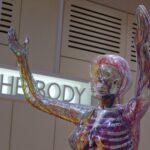 Congenital sideroblastic anaemia (CSA) is a rare disease caused by germline mutations of genes involved in haem and iron-sulphur cluster formation, and mitochondrial protein biosynthesis. We performed a retrospective multicentre European study of a cohort of childhood-onset CSA patients to explore genotype/phenotype correlations. We studied 23 females and 20 males with symptoms of CSA. Among the patients, the most frequently mutated genes were ALAS2 (n = 10; 23·3%) and SLC25A38 (n = 8; 18·6%), causing isolated forms of microcytic anaemia of varying severity. Five patients with SLC19A2 mutations suffered from thiamine-responsive megaloblastic anaemia and three exhibited the ‘anaemia, deafness and diabetes’ triad. Three patients with TRNT1 mutations exhibited severe early onset microcytic anaemia associated with thrombocytosis, and two exhibited B-cell immunodeficiency, inflammatory syndrome and psychomotor delay. The prognoses of patients with TRNT1 and SLC2A38 mutations were generally dismal because of comorbidities or severe iron overload. No molecular diagnosis could be established in 14/43 cases. This study emphasizes the frequency of ALAS2 and SLC25A38 mutations and provides the largest comprehensive analysis to date of genotype/phenotype correlations in CSA. Further studies of CSA patients with data recorded in an international registry would be helpful to improve patient management and establish standardized guidelines. For more information click here.
Congenital sideroblastic anaemia (CSA) is a rare disease caused by germline mutations of genes involved in haem and iron-sulphur cluster formation, and mitochondrial protein biosynthesis. We performed a retrospective multicentre European study of a cohort of childhood-onset CSA patients to explore genotype/phenotype correlations. We studied 23 females and 20 males with symptoms of CSA. Among the patients, the most frequently mutated genes were ALAS2 (n = 10; 23·3%) and SLC25A38 (n = 8; 18·6%), causing isolated forms of microcytic anaemia of varying severity. Five patients with SLC19A2 mutations suffered from thiamine-responsive megaloblastic anaemia and three exhibited the ‘anaemia, deafness and diabetes’ triad. Three patients with TRNT1 mutations exhibited severe early onset microcytic anaemia associated with thrombocytosis, and two exhibited B-cell immunodeficiency, inflammatory syndrome and psychomotor delay. The prognoses of patients with TRNT1 and SLC2A38 mutations were generally dismal because of comorbidities or severe iron overload. No molecular diagnosis could be established in 14/43 cases. This study emphasizes the frequency of ALAS2 and SLC25A38 mutations and provides the largest comprehensive analysis to date of genotype/phenotype correlations in CSA. Further studies of CSA patients with data recorded in an international registry would be helpful to improve patient management and establish standardized guidelines. For more information click here.
552
